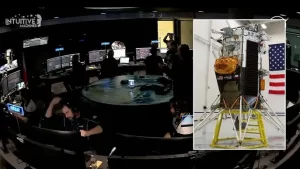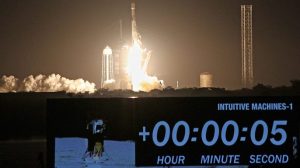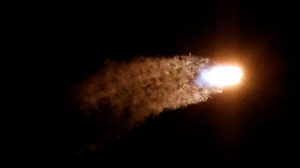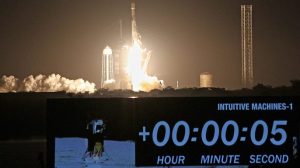US spacecraft successfully lands on moon for first time in half-century



The first American spacecraft has landed on the moon since the last crewed Apollo mission over 50 years ago after the Intuitive Machines’ Odysseus lunar lander touched down near Malapert A in the South Pole region of the moon on Thursday evening, February 22.
The last time an American spacecraft touched down on the moon was in 1972, during the Apollo 17 mission.
The lunar lander touched down at 6:24 p.m. ET Thursday, and its mission is part of NASA’s Commercial Lunar Payload Services initiative and Artemis campaign.
US spacecraft successfully lands on moon for first time in half-century
Although the lander was believed to be on the moon, the signal being transmitted by the equipment was lost.
In order to get that signal, the crew needed to use a dish in the U.K., because the lander’s transmission had been lost at landing, almost 15 minutes later, a faint signal was detected.
US spacecraft successfully lands on moon for first time in half-century
US spacecraft successfully lands on moon for first time in half-century
“We’re not dead yet,” Mission Director Tim Crain said, before telling the team the equipment was on the surface of the moon and transmitting.
A SpaceX rocket carried the Houston-based company’s Nova-C lander, also referred to as Odysseus, from Florida shortly after 1 a.m. on February 15 on a Falcon 9 rocket departing from NASA’s Kennedy Space Center in Cape Canaveral.
The launch came about after a lunar lander from Astrobotic Technology encountered propulsion difficulties during a mission in January and failed to reach the moon.
The uncrewed spacecraft has been circling the moon about 57 miles above the surface since reaching orbit on Wednesday and remained “in excellent health” while roughly 239,000 miles from Earth, transmitting flight data and lunar images to Intuitive Machines’ mission control center in Houston, the company told Reuters.
NASA said in a statement that the instruments onboard the lander “will conduct scientific research and demonstrate technologies to help us better understand the Moon’s environment and improve landing precision and safety in the challenging conditions of the lunar south polar region, paving the way for future Artemis astronaut missions.”





